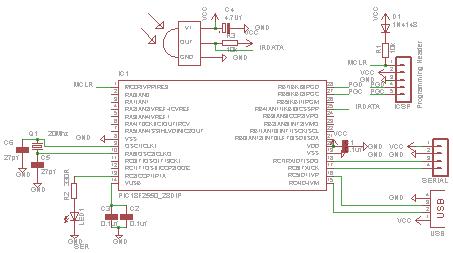Lirc Serial Receiver Howto

First download the software from the lirc website. Army Miles Casualty Cards. I strongly recommend not to use any.deb or.rpm package as they tend to make everything more complicated. Go to the page and download the most recent package.
Untar it with the command: tar jxvf lirc-0.6.6. Mini Wireless Optical Mouse Driver Mac. tar.bz2 and start the semi-graphical setup:./setup You should only select your serial port and leave all the other settings. Select the 3rd menu entry, 'Save configuration and run configure', wait until it has finished, then give (as root): make make install. Once Lirc is compiled and installed, set the serial port, load the lirc kernel module, and start the lirc daemon (lircd): setserial /dev/ttySx uart none depmod -a modprobe lirc_serial lircdIf everything has gone well, we can test the actual receiving hardware. Take a remote control and start the 'xmode2' program (if you don't use X start the character application, 'mode2'); press then some buttons on the remote. You should see something like this: Alternatively, if you are using the character version of this program, you should see a list of numbers, spaces, and pulses. What is this all about? It's the graphical representation of the IR pulses, a sort of IR oscilloscope.
Instead, use LIRC to control any application on your Linux or Windows PC with any. Your best bet is to search eBay for serial IR receivers—in the past. Linux IR HOWTO: Infrared Remote Control. Remote control via infrared is not the aim of the Linux/Ir. DA project but is included in this.
If you can see the pulses when you press the remote control buttons, you can be sure the hardware is almost basically working. Each button should generate a different 'wave' from the others, but always the same if you press it more times. It's now time to configure your remote(s), that is, give a 'name' to each button: irrecord /etc/lircd.confThe programm will ask you to press the buttons on you remote control, first in a random fashion and then one by one, asking each time the name of the button you're now configuring. If you have any problem in this step, for example you get a 'Something went wrong' message, try to use the raw learning mode, starting irrecord with the '-f' option: irrecord -f /etc/lircd.confYou can repeat this step many times, for many remote controls. The name you give to each button is important, because the applications will later receive ths name as the even from the lirc daemon.
Once the learning phase it's finished, you can test your configuration with 'irw'. You have first to restart lircd to let it read the new configuration file.
After this, run 'irw' and press the buttons on your remote: irw will show the *name* of each button when it's pressed. You can now configure the application level of the lirc system. Basically with lirc you can do the following things: • Start programs • Use lirc clients • Emulate a mouse • Emulate a pseudo-tty or send X11 events The first approach is the simplest.